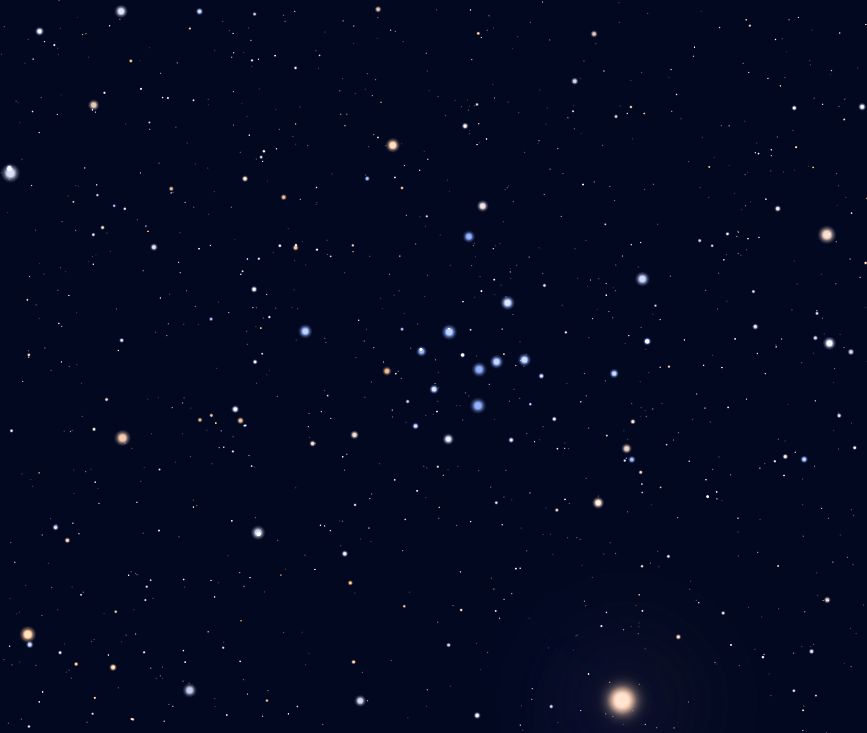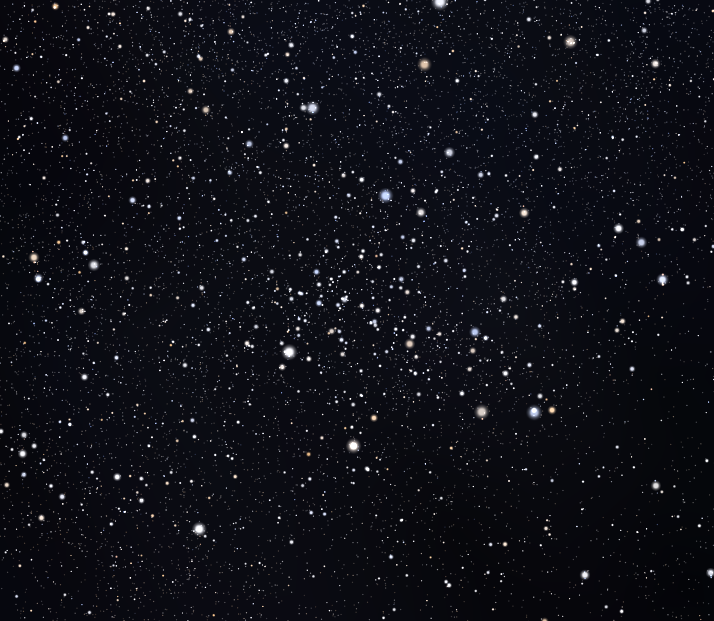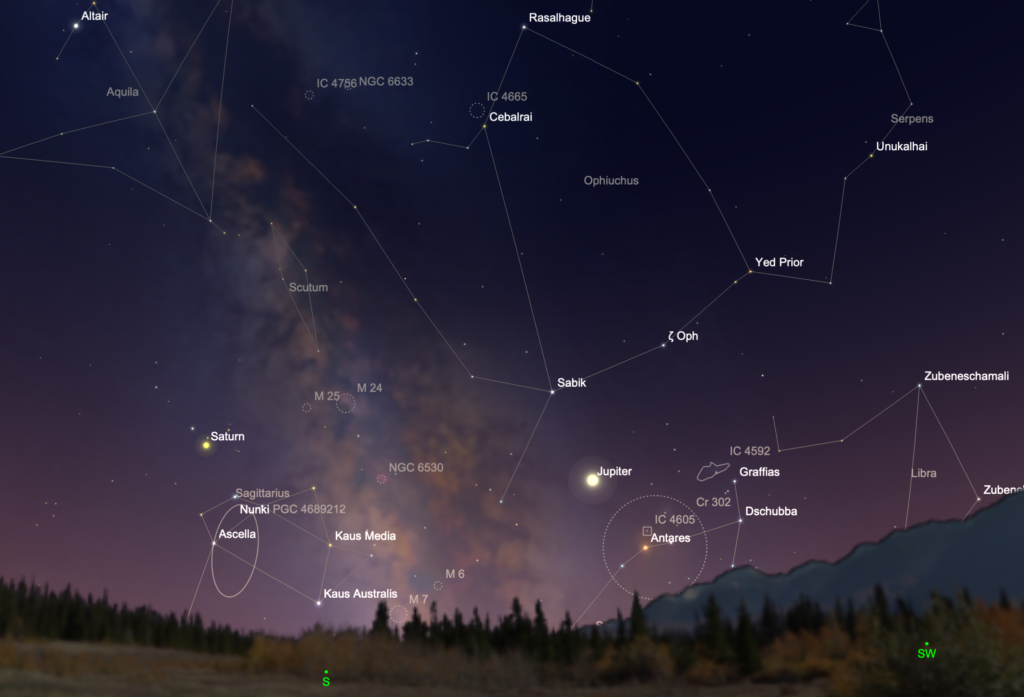
Let’s follow last week’s sky tour with a pair of objects where low power is so essential that without it, you might miss them entirely. The first is the open cluster IC 4665, which lies a degree or two north of the star Beta Ophiuchi (Cebalrai). The cluster was “discovered” by astronomer after astronomer, but it didn’t make enough of an impression on anyone to stick around in the astronomical consciousness until it was finally added to the Index Catalog in 1908. In my little telescope at 18x I see a very scattered group of twenty or so easily seen stars spreading across a degree or more of sky. Try as I might, I could not imagine a compelling picture in this random assortment of star dots. Surrounding the most nearly crowded part of the cluster are a few more isolated pairs and individual stars that give the impression of being cluster members. This might be a better object for binoculars than for any telescope.

A similar, but more visually appealing, cluster is IC 4756, which lies in a nondescript area of Serpens between Aquila and Ophiuchus. More compact than IC 4665, it’s also more densely populated, albeit with generally fainter stars. It’s bounded by a broad trapezoid of stars ranging in brightness from magnitude 5-7. The cluster’s stars themselves are all around magnitude 9, still easy in a small telescope. I see about 50 of them here.
Don’t let these Index Catalog (IC) designations keep you from trying to see these objects. Just because an object isn’t in the Messier list, or even the NGC catalog, doesn’t mean it’s a huge challenge to see. Both of these clusters are easy objects for any decent small telescope.

Now we come to the ultimate wide field object: the Milky Way itself. No optical instrument can surpass the view you get from a dark site with your own very wide field eyeballs, but a low power telescope can focus your attention and your wonderment on some of its distinctive features.
First we consider one of the odder entries in Messier’s list of “false comets”, M24. Also called the Small Sagittarius Star Cloud, it is not properly a star cluster, but rather a view into distant regions of our galaxy, as seen through an open window in the curdled dust that obscures so much of our view of our own galaxy. At 18x this fat sausage of stars is beautifully framed, about a degree and a half long and a third of that wide. Surrounding it and defining its boundaries are various dark nebulae.
Many stars are visible in M24 at this low power, but to really delve into this vast depth of stars you need to up the magnification and preferably the aperture. My 155mm refractor transforms this star cloud into a hypnotic, humbling spectacle like no other in the sky. The peculiar thing about these views is that so many of those impossibly delicate stars, which peer at us from thousands of light-years away, are arranged in beautiful curves and lines. I can’t help but be drawn into a contemplative state as these mysteries present themselves to my eyes. It brings me a mental silence that hints at questions I barely know how to ask.
This object also makes me doubt that Messier’s only intention in compiling his list was to record false comets.

If the Small Sagittarius Star Cloud is so wondrous a sight, what about the Large Sagittarius Cloud?
Composed of billions of stars, lying three times as far away at about 30,000 light-years, the Large Cloud presents an entirely different kind of spectacle. This is part of the central hub of the Milky Way Galaxy, the closest part to its core that we can see, because of the vast clouds of dust that get in the way of the core itself. Therefore, the Cloud’s individual stars are harder to see. In fact, the first time your telescope drifts into this area, you may think you’ve found a zone of local light pollution, because your field of view will be filled with a flat milky glow. But then you notice how it’s riddled with the blotches and snaking curves of dark nebulae, and the true nature of what you’re seeing will suddenly burst into your mind, billions upon billions of distant suns, a mist of them, inconceivable, incalculable. You scan around, and spy in the vicinity various clusters and nebulae, but there, far behind them all, forever out of the reach of humanity, are the massed suns of the Galactic Center, and what lies among them, neither you nor I can say.
All these sights are available to anyone able to spend a few hundred dollars on a decent telescope, and who has the ability to escape the city lights and go to a place where the stars still reign at night.
Share This: